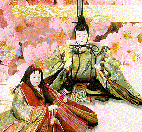
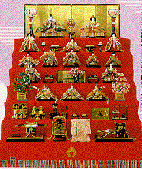
|
|


The first seasonal festival after a baby was born is called the First Coll's Festival. Hina-matsuri, the Doll's Festival is on March 3rd and it is formally called "Joumi-no-sekku". It comes from the day ofthe first Serpent, which was intoroducd from China in ancient days. The season is suitable for the celebration of the Festival becuse the peach blossoms are in bloom then. Therefore the festival is familiar under the name of the Doll's Fastival.
The history of Hina-dolls goes back to the Heian era. It is said to be the most popular in the middle of the Edo era. The forgeous dolls were made as a bride's outfit when a princess of a daimyo, a feudal lord, got married. We can sometimes find the old dolls of those days when we visit the local museums now.

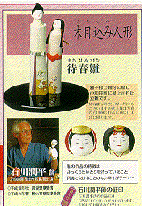
The present Doll's Festival is combined with two festivals. One is aplay with hina-dolls ( it was called hiina-asobi ) . The other is the custom of nagasi-bina, where people let the hina-dolls flow in the river or the sea. The dolls were given the owner's misfortune and desaster. The family display hina-dolls with the wish for their girls' health or growing into a healthy nice women. That means the doll should be a substitute. This is how misfortune will not happen to the girls and they will be happy in their life about the marriage and so on.
Hina-dolls used to be a present to her husband's family as a miniature of a bride's outfit. An old man's doll is given by the bride's parents before a baby is outfit. It is cerebrated as a "Bride Festival" , which means the young couple live a happy and peaceful life until they grow very old. After a baby was born and the family is given hina-doll by the bride's parents, then they often prepare a doll in chedked-pattern dress or "tachi-bina"(a set of standing dolls). In general their friends, relatives and go-between present the couple a child doll, Imperial dolls or a dancing doll in a case.
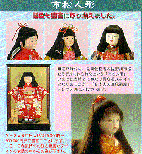
The Boys' Festival, the Iris Festival on the 5th of May, comes from the Chinese customs. In old days they hated May and had a tradition toexorcize their bad luck or disease througe medicinal herbs. The custom was introduced into Japan and developed into an anual event in the palace or a warrior family. We have a custom that we hang under the eaves such medicinal herbs as an iris or a muguort. Its origin is also in the Chinise custom. It is the reason why the Boys' Festival is called the iris festival compared with the Doll's Festival.
The custom of picking herbs on the day of the Iris Festival was also adopted as an anual event at Court in Japan. It is recorded that the custom change into the dear hunting combimed with the training that the martial arts, and then into the ceremony of "Uma-yumi"- an archery on a horse - in the Nara Era. It was a glittering scene like a picture scroll. The warriors have become a model with a helmet, "Musha-doll", which is displayed at home later.
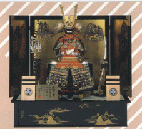
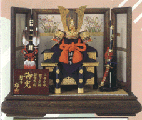
In the Kamakura era,there appeared a paper helmet or a paper doll decorated with an iris. In addition there was a custom that people set up at gate a spear, a pole sword and streamer with gold or silver foil. Afterwards an iris is thought to go to martial spirit because the two words has the same pronunciation "sho-bu" in Japanese. That is why the Iris Festival became the Boys' Festival compared that the Hina-doll Festival in March. then in the Edo era, the festival came to be popular in celebration of a boy's birth.
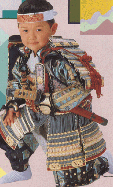
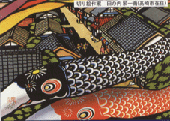
The custom of the decoration outside became more and more popular because people wanted the community to know they had a boy. But there were a lot of big fires in Edo and the decorations had been prohibited Then the decoration inside at home had been a mainstream since Temmei (a name of an era,which was from 1781 to 1789). The next step was that a warrior doll appeared with a hope for success in life because the skills for making dolls had been developed. A full armor for a decoration which had been allowed only in a warrior class were decorated among the common people, so the brilliance of decoration in May was competed among the people.
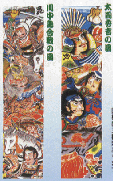
"Tango" used to mean the day of "Uma" at the beginning of the month- the Horse of the twelve horary signs. Though the origin is not clear, it was fixed on 5th of May because there was a custom that the day of the same number in odd months fell on "Sekku" .
It was in 23 of Showa, in 1948, that the day was fixed in the name of Children's Day as a national holiday. With the iris bath, which means protecting something evils, we now inherit the custom that people celebrate a boy's growth by decorating a warrior doll as our special event of seasonal festival.